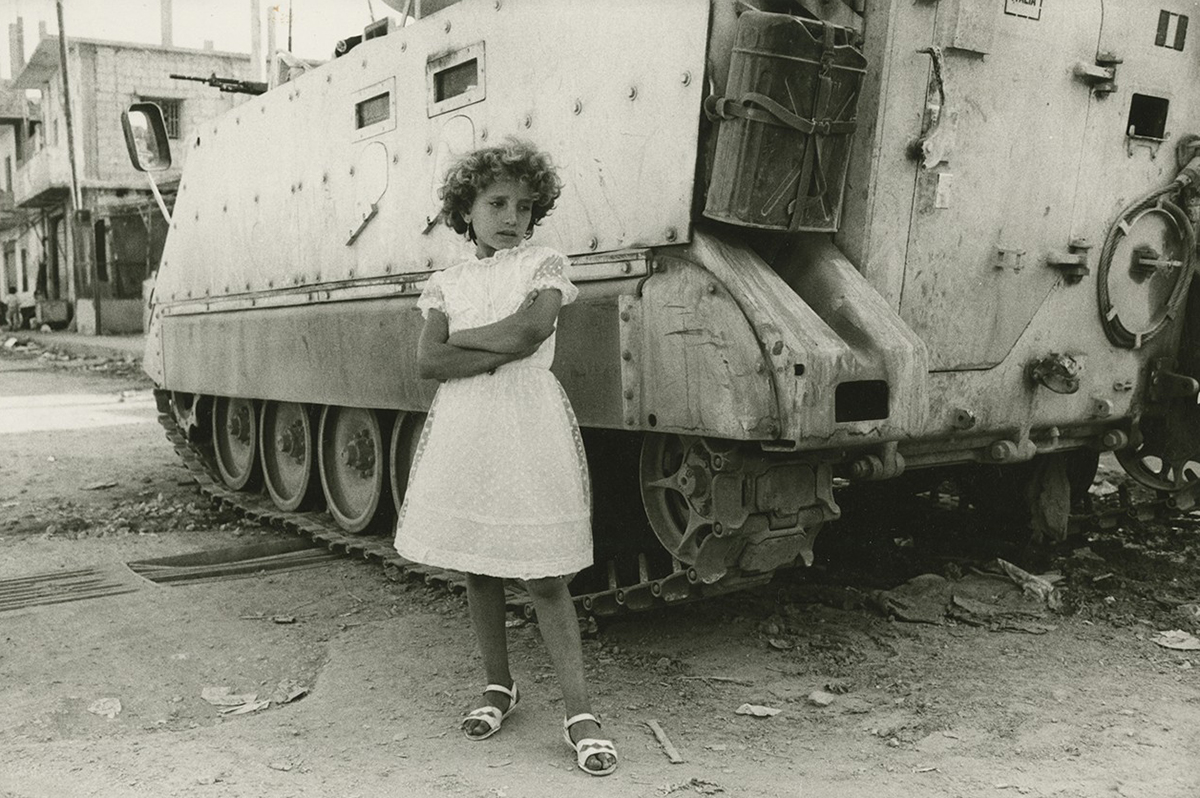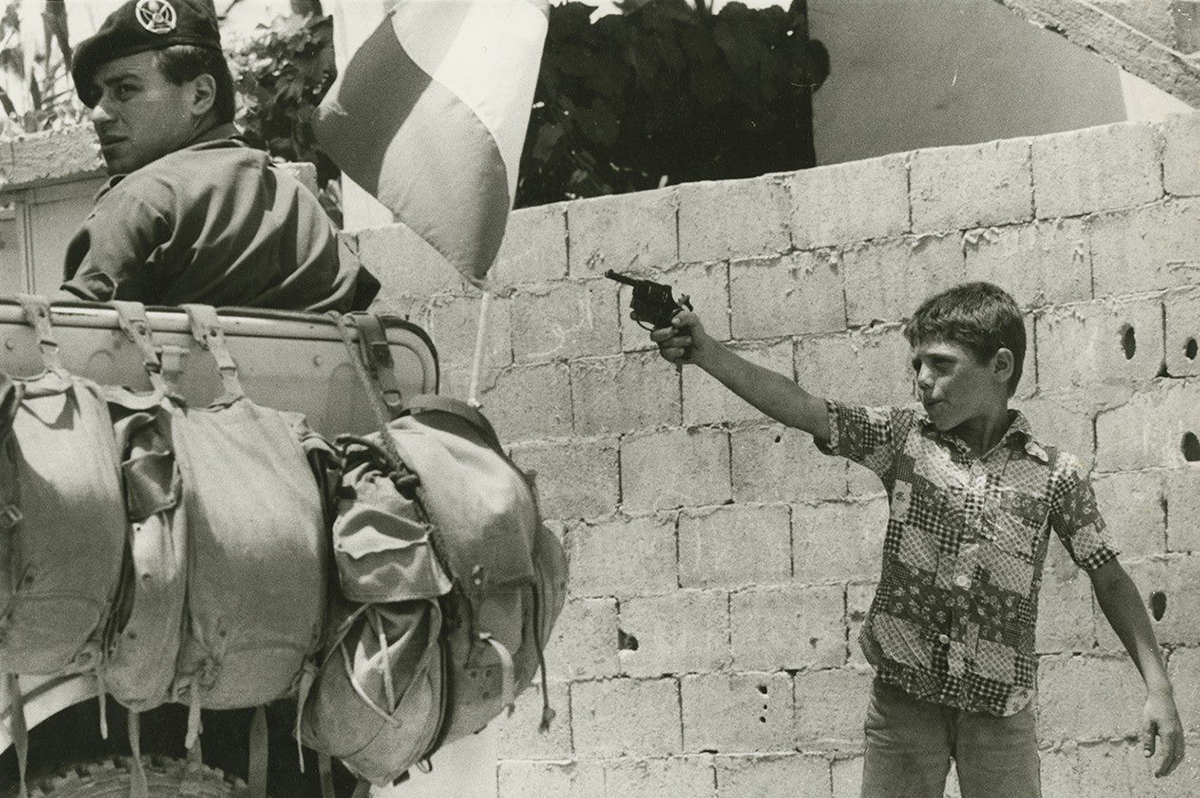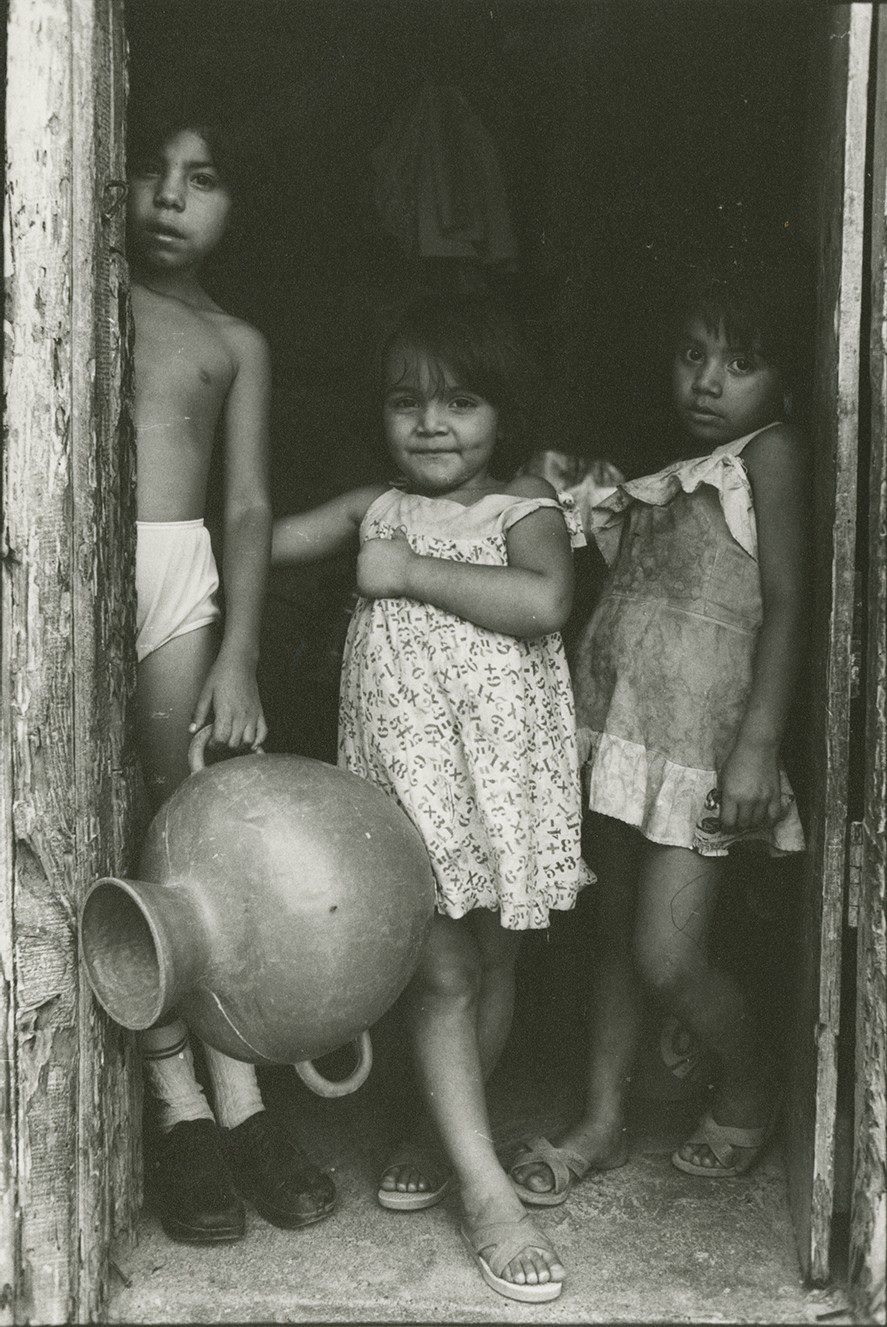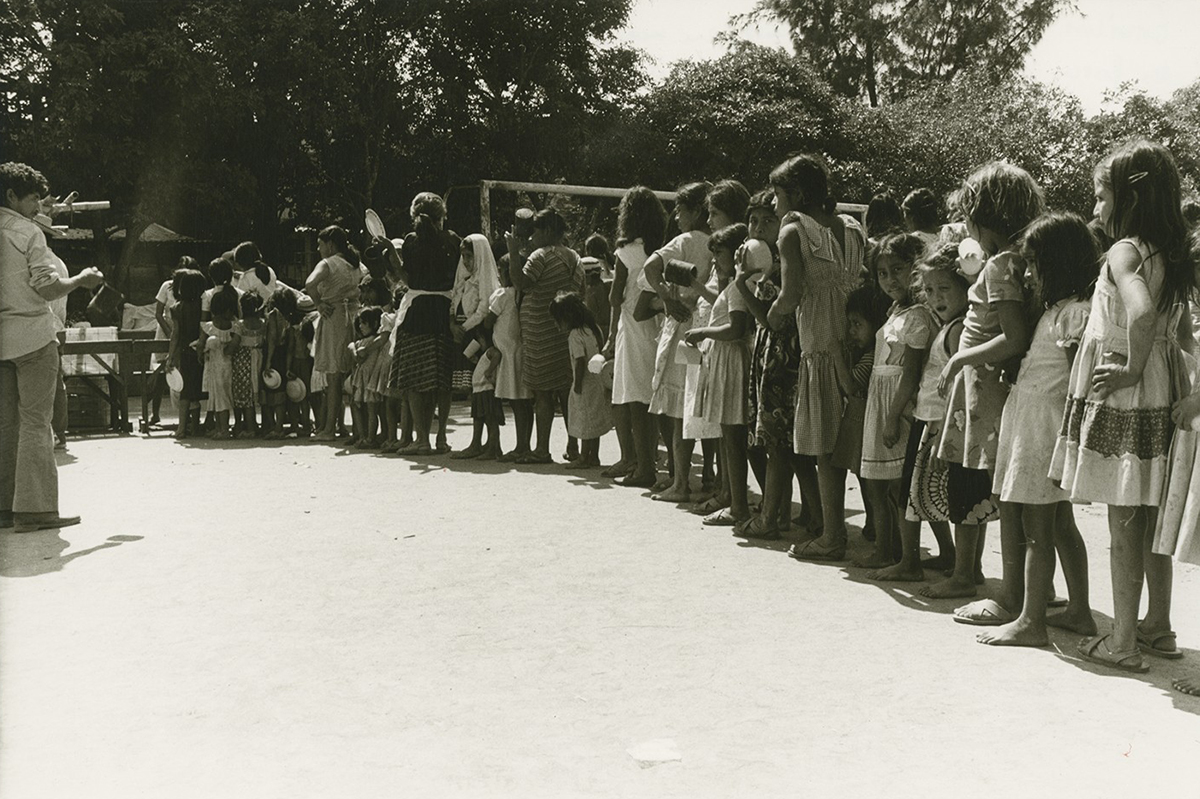The Inhumane Reality of War
Gaynor Tutani shares her thoughts on war, destruction and childhood, experienced during her Archive Assistant placement at Four Corners.
As a history scholar I was excited when I heard that I had been successful in my application to take up an Archive Assistant placement with Four Corners. I was eager to uncover histories that I was unaware of, but I never expected to be sad or broken as a result. Going through Four Corner’s archive and helping to audit and plan possible cataloguing systems has been a joy. However, this changed when I came across images of Israel’s invasion of Beirut in 1982, and of the civil war in El Salvador from 1979-1992. As I sat alone, perusing the archival content and viewing the war photographs, I was overwhelmed by the horrific images. What affected me the most was the realisation that in 2022, in the midst of recovering from a world pandemic - a war of its own kind - wars against others have not ended. The reality of that thought shook me.
I felt a slow burning sensation blazing within the pit of my stomach, archive fever, this is in the sense that the archive was making me sick, and not in referral to Derrida’s philosophical writings. As I worked through this work it physically impacted my wellbeing. I struggled to understand why it was so debilitating. I felt hot, then cold, and almost cried, but my tears would not flow. Each time I looked at the dead bodies, war tanks, destroyed homes and helpless children, I felt the burn intensify. As I examined the old images of these wars, their effect froze me. I could not take it away. It happened, the suffering and dying. No matter how hard I tried, I could never comprehend what those people endured. My failure to do anything, that feeling, the hopelessness, drove me to share my experience. I know that writing this piece will not really do much, but it gave me peace to process it in this way – a purging of some sort.
The photographs were of past conflicts, but I could not help but connect them to current injustices and wars, especially those connected to race and discrimination, be it religious or based on gender and sexuality differences. The images of dead bodies were so familiar, that while part of me was repulsed, I was accustomed to them. I believe that this is why I felt feverish. In the media, especially on TV, I continuously see similar footage - the only difference being the time period. I was driven to think of children that have experienced and survived wars and their childhood or lack thereof. How do they feel and think about the world? What happens to their sense of freedom: are they free or somehow locked within this trauma? How can they rise above it and separate their present lives from the past, or will that past always haunt them?
Two images that stuck with me were of a young girl in a white dress posing in front of a tank, and a young boy pointing a fake pistol towards a soldier. Put together the photographs captured the essence of my questions. The young girl’s garments connoted her childhood innocence: despite the war, she was still very present as a child posing for a photo. Her stance reminded me of some family album images of myself and my cousins. I imagined that the photographer may have prompted and told her what to do, so, affecting her sense of freedom as to how she wanted to be viewed, and how she felt about the war and the presence of the tanks within her environment. I found myself wondering what her life was like then and how she coped as an adult, and if she survived the war. Unlike many of the violent-graphic photographs that I went through, her photograph was as beautiful as it was heart-breaking. It gave me a sense of hope and the positive thought that in spite of living in fear, the people in these images possibly also experienced good and happy days. However, the photograph of the young boy was disturbing. Although the image could be read as typical child’s play, it was sinister to think of the possible violence that the boy could and may have committed later against others, as a consequence of knowing war as the norm. Immediately I thought of child soldiers, particularly a film I once saw (Beasts of No Nation). Although the film is fictionally based on an imaginary African civil war, the director’s narrative of the main protagonist - a young boy who was coerced and mentally conditioned by the militia to fight and join their violent lifestyle - tells of a depressing and traumatised life. Imagining the same for the young boy in the photograph and many others within these images, I accepted the truth of our humanity as sometimes inhumane. This realisation is the reason why I am sharing this experience.
It took me two days to go over the images. On the second day I listened to music as I worked through the material. The week before I had come across Common’s album, A Beautiful Revolution Part I and had been engrossed with his ‘Say Peace’ song. I love the duet between the drum and bass, and its powerful lyrics. For a whole week I could not get it out of my head. While the song and the majority of the album is clearly about Black lives and the struggles of people of colour in America, listening to it as I processed the archive, I felt that the pain of war and hate against any human deserved to be shared the way Common advocated. He did not shy away from the harsh realities that Black people face in America, but he sang of hope, resilience, and the power to rise above injustices. His inspiring and uplifting music made my work easier, especially his song, ‘A Place in This World’ which talks of a better world for everyone. I do not compare the experiences of Black people to those I was archiving, but the context of the music and its plea to justice matched my thoughts about the archive images and the current ongoing wars in Cameroon and Ukraine although Ukraine has received much media coverage, events in Cameroon are hardly publicised. These are obviously vastly different struggles but by putting them together I wish to highlight that we need change. We have been through a lot, these histories continue to be our present – truly something has to change!
Gaynor Tutani is a Zimbabwean-British researcher, curator, producer, writer and co-founder of EARTHworks.
Exhibitions discussed:
1. Beirut: The Israeli Invasion of Lebanon 1982/3 – Works by Judah Passow, Chris Steele- Perkins and Yousef Kuttob.
The exhibition was one of the Half Moon Photography Workshop’s touring exhibitions and it was showcased all over the UK.
2. El Savador Repression & Revolution Exhibition – Works by a collection of American and European Photojournalists.



